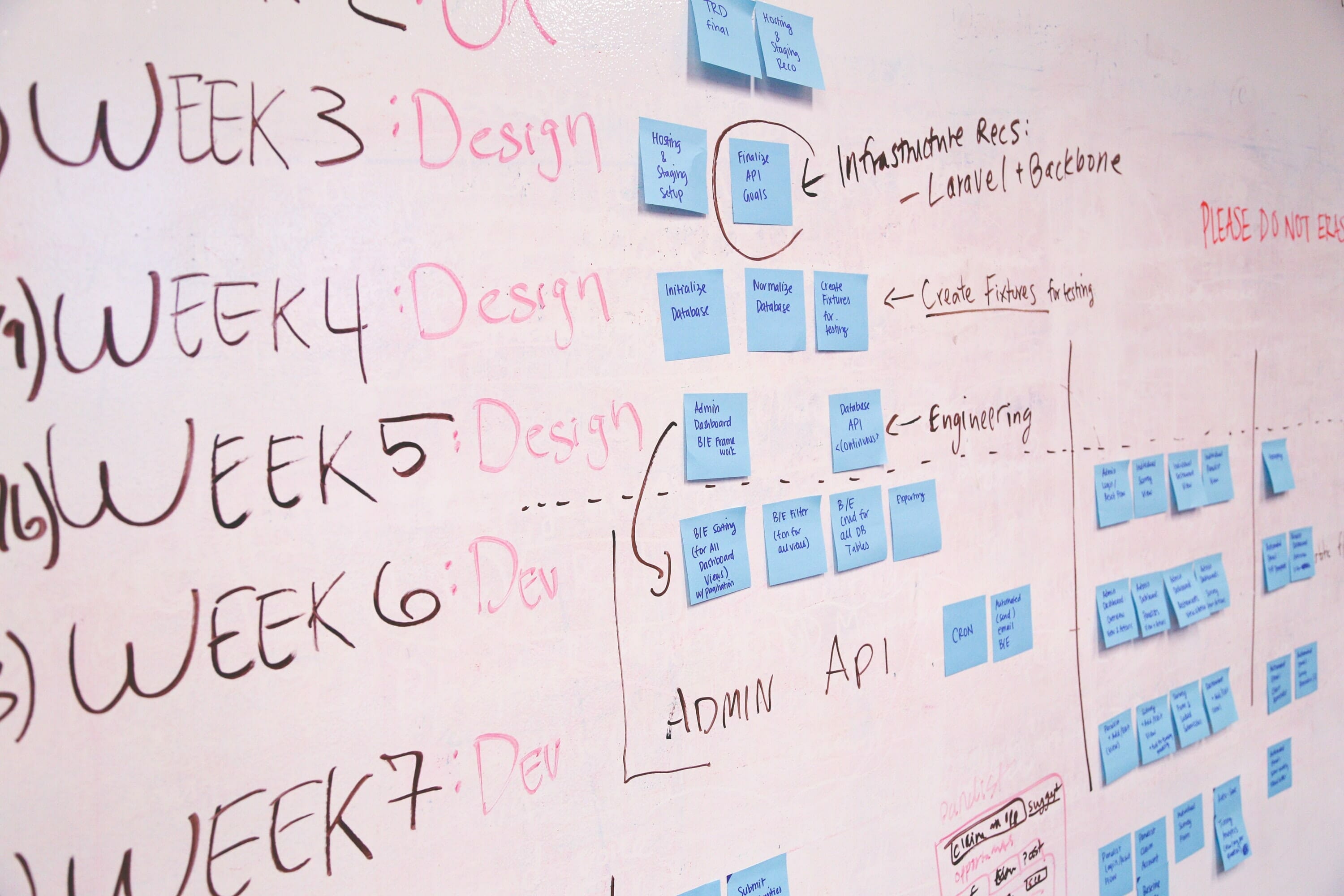How to Build a Mobile App: The Ultimate Guide
It’s no secret that smartphones are quickly becoming intrinsic multi-tools that enhance our productivity, our access to information, and pretty much everything else in our daily lives. The meteoric rise of mobile devices is indeed a shake-up to an already volatile and new industry itself; it’s almost difficult to believe that mobile devices account for 63% of all internet traffic, a 6% rise from 2017.
Out of that 63% of mobile internet traffic, a whopping 90% was spent using apps. Just like the total increase of mobile traffic, app usage grew by 6% from 2017 to 2018 – a dip from the 11% between 2016 to 2017 – but still a significant amount of growth nonetheless, especially when accounting for certain app genres, like games, which are seeing users spending both more time and money on their interactions.
This is a trend that isn’t expected to stop any time soon, and if you’re an entrepreneur, or the CEO of a fortune 500 company, and you don’t have an app to enhance your business (or engage your customers), it’s time to get one.
Chapter 1: Native vs. Hybrid Development
Chapter 2: iOS Development and Swift Code
Chapter 3: How to find the perfect mobile app developer
So, how do you go about making an app?

Before we get into the intricacies of app creation, let’s go over what we’re going to cover in our How to Build a Mobile App: The Ultimate Guide.
- The platforms available to you, and the code that makes them work
- How to properly design your app
- How to find and communicate with developers
- Different types of development
- App Store Optimization and how users engage with the App Store
- Usage, keyword, and design trends
- How to measure, grow, and ensure your app’s chance of success over its lifetime
For the next 22 weeks we’re going to dive deep into every facet of app development, from the very basics and first steps, to user retention and acquisition strategies. This is the How to Build a Mobile App: The Ultimate Guide after all, so strap yourself in for a five-month-long ride down the app creation highway.
For now, here’s an introduction to each topic:
The platforms available to you, and the code that makes them work

When it comes to platforms, there are two main players; iOS and Android. Each has its own benefits and drawbacks when comparing the two – iOS provides greater stability and Android allows for more customization.
Apps that run on iOS are programmed using Swift, the most current iteration of the language being Swift 4. Swift can be used to code for iOS, macOS, watchOS, and tvOS. This is handy, as it gives you the ability to code for all Apple products while only requiring the knowledge of one language, but it limits your potential audience.
When programming for Android, there are many languages available to you: Java, C and C++, Go, and Kotlin – the most popular being Java. Android is open source, which gives you free reign to modify and distribute Android’s code at no charge. Android is used on a wide variety of mobile devices, which gives you the potential to open up a greater range of revenue streams, but this can also slow down your app’s development.
When it comes to choosing a platform for your app, there isn’t a right or wrong option – and frequently, the best answer is both. In the future, we’ll be looking more into the intricacies of developing for both iOS and Android.
How to properly design your app

App design is like butter on toast; not enough, and you’re in for a bland experience – too much, and you’re not sure whether you should eat it or throw it out to give your arteries a break. Due to user experience (UX) being so entwined with user retention and acquisition rates (as well as user ratings) an app’s design can make or break its chances of success.
Design trends are changing all the time, so it’s important to update your app to not only keep it secure, but to also ensure it stays relevant. User reviews are a great source to pay attention to when planning your app’s design – but always err on the side of caution when designing your app – if you can scrape some butter off of that toast without sacrificing flavor, get rid of the unneeded butter.
In the future, we’re going to cover app design principles from the ground up.
How to find and communicate with developers

There’s a multitude of developers out there, so how do you figure out which one is the best for you?
Rather than searching Google, it’s best to start with Clutch. Clutch is a website dedicated to providing a platform for entrepreneurs and businesses to search for developers that fit their specific needs, and is a great resource for vetting teams when deciding on a development partner.
As we cover development pitfalls and best practices, we’ll go into detail about how to ensure time spent building your app is never wasted, as well as tips on how to communicate effectively with your development team.
Different types of development

There’s plenty of fish in the sea, just as there’s a myriad of methods to structuring and planning your app’s development. The most common are Skyscraper, Agile, and Minimum Viable Product (MVP).
In short, the Skyscraper method relies on heavy planning and market research, Agile focuses on utilizing an adaptive, responsive method of development, and MVPs are used to quickly and efficiently produce a bear-bones, but workable app, intended to be enhanced upon after being brought to market.
In the future, we’ll cover how to figure out which development style will work best for you.
App Store Optimization and how users engage with the App Store

App Store Optimization (ASO) is crucial to your app’s chance of success. Just like SEO, ASO relies on utilizing keywords that users regularly search for, which are then paired with your app’s total downloads, user retention, user ratings, and user reviews, which culminate to form your app’s ranking in the App Store or Google Play. Apps with higher scores in these categories will be listed above lower-scoring apps during searches, giving them access to a wider audience.
Most app downloads come directly from the App Store’s search function. The two largest discovery channels in the App Store are the search function, coming in at 20%, and word-of-mouth, coming in at 15%. This exemplifies the importance of both keywords and UX, as users are much more likely to recommend an app to a friend if their experiences using the app are positive, as opposed to negative or even mediocre. Interestingly enough, negative word-of-mouth spreads much faster than positive, doubling the importance of your app’s UX.
In our How to Build a Mobile App: The Ultimate Guide, we’ll spend a lot of time covering ASO best practices, pitfalls, and proven user acquisition and retention strategies.
Usage, keyword, and design trends

Your app’s ranking, design, and user experience aren’t set in stone. Trends can make or break your app’s growth, so knowing the resources and options available to you in order to stay at the crest of these trends is crucial to your app’s success.
Your customer’s usage patterns will morph based on a plethora of factors, from simply-recognized time-of-day patterns to seasonal usage patterns influenced by weather, or even geographical differences. For example, productivity apps are used more during the day, while mobile games are used more during the evening. An app that tracks waves for surfers to catch will perform well in costal areas, while a snow-plow service app would perform better in cold regions during the winter.
ASO is ever changing – for example, certain keywords (especially those that are holiday related) can perform better during certain seasons, and should be implemented only at particular times. Keyword trends are forever changing, and it’s imperative to keep up with those trends to maintain your audience’s engagement and growth.
Even the design of your app is expected to change over time – mobile devices are constantly improving and changing, and your design must follow suit to compensate with larger screen resolutions and more powerful processors. There are trends in mobile design as well, which evolve frequently, and paying attention to the UX innovations of your competitors can give you an edge on how to do it better (simpler is always better), and stay up to date.
In the future, we’ll go into more detail about the methods and resources available to help you stay on top of upcoming keyword and design trends.
How to measure, grow, and ensure your app’s chance of success over its lifetime

There’s never a fool-proof method to ensure a 100% success rate with any app, let alone any facet of life, but there are tools and options available to you to help ensure your app is successful in the marketplace.
There are tons of analytical services to choose from, ranging from touchscreen heat mapping and user session tracking and recording, to crash monitoring and realtime alerts.
If you’re keeping up with your ASO, and providing users with regular updates to stay on top of trends, you’re already headed in the right direction. Partnering with the right developer can spell either the success or failure of your app as well, so knowing how to shop for and speak with development teams is a crucial step in providing yourself with a stable foundation to build upon.
Over the next few months, we’ll dive deep into all of these topics, covering app creation from start to finish. Next week, we’ll cover tips on how to be a successful appreneur.





Leave a Reply
Want to join the discussion?Feel free to contribute!